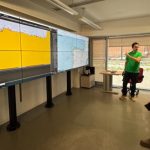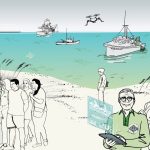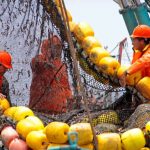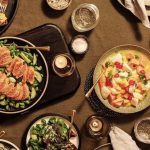Raw material availability from external suppliers was good for the Aker Seafoods processing segment in the first quarter. The harvesting segment accordingly gave priority to expanding catches of saithe and haddock, which are not used as much for in-house production. That had a negative effect on harvesting in the first quarter, since the saithe and haddock fisheries are less profitable than cod. Results in the harvesting segment were also affected by a significant decline in whole fish prices, but that was offset at the same time by lower fuel costs than in the same period of 2008.
– Lower prices for a number of Aker Seafoods’ products, both within harvesting and primary production, results in lower turnover. We have kept a high focus on fresh production and improved product mix, which has contributed to a volume increase of more than 30 percent of fresh fillet at the processing plants in Norway in the first quarter and is in line with the group’s strategy, says Aker Seafoods CEO Yngve Myhre.
Operating revenues came to NOK 639 million in the first quarter, down from NOK 791 million in the same period of 2008. This decline derived mainly from the business segments in Norway and largely reflected the fall in whitefish prices. Aker Seafoods achieved earnings before interest, taxes, depreciation and amortisation (EBITDA) of NOK 54 million in the first quarter, compared with NOK 73 million in the same period of 2008.
– With focus on saithe and haddock harvesting in the first quarter, as well as increased cod quotas, Aker Seafoods and the Norwegian fleet have a substantial amount of cod left for the remainder of 2009 compared to previous years. Therefore, we expect that raw material prices will remain relatively low due to high access, which will give grounds for increased activity and profitability in the processing segment where focus will continue on fresh production, says Myhre.
High focus on fresh products, combined with greater specialisation in the processing segment, boosted the return per kilogram of raw material and increased efficency. Raw material prices declined substantially from the same period of last year. The market for salted fish was the most challenging segment in the first quarter, and had a negative effect on results. Good raw material availability maintained production at a high level, but deliveries of very large cod meant that it was necessary to produce a good deal of salted fish with a negative margin.
In continental Europe, secondary processing makes a positive contribution in the first quarter. EBITDA, both in Denmark and France, increases compared to the same period last year, while the turnover remains on the same level as in 2008. The first quarter is traditionally the period with the lowest earnings in these segments, and results were in line with last year’s figures.
The whitefish market is affected by the general development in the world economy and Aker Seafoods is uncertain of short-term developments of market prices. As product prices decrease, Aker Seafoods is experiencing an increase in demand and possibilities of completing promotional campaigns in European convenience chains.








